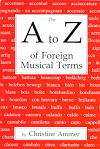 |
G140: The A to Z of Foreign
Musical Terms by Christine Ammer. ECS Publishing,
1989, PB, 128 pages. This book gives the English equivalents of 3,000
musical terms primarily from French, German, Italian, and Spanish. They
were collected from more than 30,000 scores. A guide to French, German,
and Italian pronunciation is also included. |
11.95

|
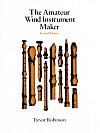 |
G073: The Amateur Wind Instrument
Maker by Trevor Robinson. University of Massachusetts Press,
PB,
116 pages. Guidance for the amateur craftsman who wishes to make wind
instruments.
The book includes the flute, fife, recorder, clarinet, shawm, oboe,
krumhorn,
rackett, cornetti, trumpets, and horns. |
16.95

|
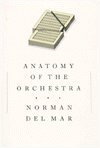 |
G002: Anatomy of the Orchestra by Norman Del
Mar. University of California Press, PB, 528 pages. A comprehensive
guide to the
orchestra for conductors, musicians, students and everyone interested
in the
performance of orchestral music. The book is divided in to sections by
type of
instruments: The Strings, The Woodwind, Horns, The Heavy Brass, Timpani
and
Percussion, and Keyboard and Other Instruments. Each section goes into
considerable
detail about each instrument including characteristics, range,
etc. The book concludes with an extensive index. |
34.95

|
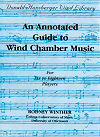 |
G207: An Annotated Guide to Wind Chamber Music for Six
to Eighteen
Players by Rodney Winther. Warner Bros Publications
(Alfred), 2004, PB, 448 pages. This thick book has a great deal
of information, which is enhanced by the paragraph or more of
description of each of the more than 500 compositions. It is organized
by the number of players and within each sized ensemble by
instrumentation. It also includes wind music with soloist(s) and with
voices. Helpful indexes will assist the reader.
|
39.95

|
 |
G049: An Anthology: The Writings of Josef Marx
compiled
and edited by Gloria Ziegler. McGinnis & Marx, 1983, PB, 160 pages.
Josef Marx (1913-1978) was a renowned oboist, musicologist, music
publisher
and teacher. This is a selection of his articles, liner notes, and a
lecture
from the 1950s through the 1970s. |
11.95

|
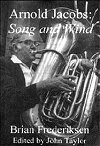 |
G042: Arnold Jacobs: Song and Wind by Brian
Frederiksen,
edited by John Taylor. WindSong Press, 1996, HB, 276 pages. With a
career
spanning seven decades with the Indianapolis, Pittsburgh and Chicago
Symphonies,
Arnold Jacobs earned a reputation as a world-class performer. Equally
significant
are his teachings, especially on breathing. This book was
written
by Mr. Jacobs' assistant, Brian Frederiksen and draws on material from
masterclasses, private interviews, previously published writings and
contributions
from his students and colleagues. |
29.95

|
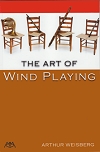 |
G032: The Art of Wind Playing by Arthur
Weisberg. Meredith Music, 1975/2007, PB, 145 pages. The author, who was
a
renowned bassoonist, has written this
book because of his concern that winds lack the traditions and the
consistent
pedagogy of string and keyboard instruments. Topics include dynamics,
intonation,
articulation, vibrato, technique, breathing, musicianship, and
interpretation.
An essential reference for all wind musicians. |
24.95

|
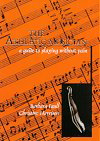 |
G022: The Athletic Musician, A Guide to Playing
without
Pain
by Barbara Paull and Christine Harrison. Scarecrow Press, 1997, PB, 175
pages. An excellent book for all instrumental musicians co-written by a
physiotherapist and a violinist. It includes detailed but easy to
understand
guidance on both what to do and what not to do. Main sections cover the
problem of musician's injuries, anatomy and applied anatomy for
musicians,
and the musician as athlete. |
68.95

|
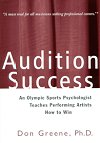 |
G038: Audition Success by Don Greene.
Routledge, 2001,
PB, 168 pages. Turn good auditions into great ones with Audition
Success.
Master audition coach Don Greene, Ph.D. techniques teach you how to
monitor
and control fear, and put your nervous energy to work. The beginning
performer
will find here the tools to prepare for the audition circuit, and the
experienced
performer will appreciate techniques that can turn good auditions into
great ones. |
26.95

|
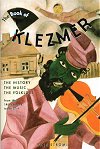 |
G017: The Book of Klezmer by Yale Strom. A
Cappella Books,
Chicago, 2002, HB, 381 pages. This book by klezmer musician and author
Yale Strom covers the entire history of klezmer and is based on both
written
sources and more than 50 research trips the author made to Eastern
Europe
between 1981 and 1999. The chapters are: From King David to Duvid the
Klezmer,
From the Enlightenment to the Holocaust, Klezmer in the New World
1880-1960,
and From Zev to Zorn: The Masters of Culture (the klezmer revival).
Appendices
are Klezmer Memories in the Memorial Books, Klezmer Slang, and Klezmer
Tunes. The book includes photographs, both old and taken during the
author's
research trips. |
27.95

|
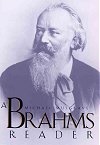 |
G030: A Brahms Reader by Michael Musgrave.
Yale
University
Press, 1999, PB, 344 pages. This engaging account of the life of
Johannes Brahms provides a fuller portrait of the German composer than
ever before. Eminent Brahms scholar Michael Musgrave draws on a wide
array
of documentation to illuminate Brahms's personality; his outlook as a
composer;
his activities as pianist, conductor, scholar, and traveler; his
friendship
with Robert and Clara Schumann; and much more. |
26.95

|
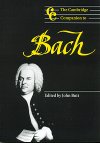 |
G050: The Cambridge Companion to Bach edited
by
John Butt.
Cambridge University Press, 1997, PB, 341 pages. The Cambridge
Companion
to Bach goes beyond a basic life-and-works study to provide a
late-twentieth-century
perspective on J. S. Bach the man and composer. Benefiting from the
insights
and research of some of the most distinguished Bach scholars, this
Companion
covers cultural, social and religious contexts, surveys and analyzes
Bach's
compositional style, traces his influence, and considers the
performance
and reception of his music through the succeeding generations. |
30.95

|
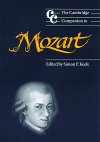 |
G051: The Cambridge Companion to Mozart edited
by Simon
P. Keefe. Cambridge University Press, 2003, PB, 309 pages. Bringing the
most recent scholarship into the public arena, this volume bridges the
gap between scholarly and popular images of Mozart, enhancing the
readers' appreciation of Mozart and his extraordinary output. Part I
situates
Mozart in the context of late eighteenth-century musical environments
and
trends that played a pivotal role in his development and examines his
methods
of composition. Part II surveys his works in an the genres in which he
excelled and Part III looks at the reception of the composer and his
music
since his death. Part IV offers insight into Mozart's career as a
performer
as well as perspectives on historically informed performances of his
music. |
31.95

|
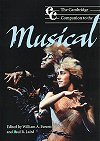 |
MT01: The Cambridge Companion to the Musical
edited by
William A. Everett and Paul R. Laird. Cambridge University Press, 2002,
PB, 327 pages. An accessible survey of one of the most popular forms of
musical performance. Written especially for students and theatergoers,
it offers a guide to the history and development of the musical in
England
and America, and worldwide. Starting with the early history of the
musical,
the volume examines the latest works and innovations, and includes
information
on the singers, audience and critical reception, and traditions. The
book
contains a chronology, reading lists and photos from key productions. Sale Price.
|
23.95

|
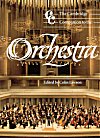 |
G058: The Cambridge Companion
to the Orchestra edited by Colin Lawson. Cambridge University
Press,
2003, PB, 297 pages. This up to date guide to the orchestra and
orchestral
life combines orchestral repertory history with critical thought. It
includes
topics such as the art of orchestration, score reading, conducting,
international
orchestras, the historical instrument movement, recording, and becoming
an orchestral musician, educator or informed listener.Click
on the book cover to view the table of contents. |
34.95

|
 |
G131: Circular Breathing: a
Method
by Robert S. Spring. Windplayer Publications, 2006, SS, 31 pages. This
book presents two alternative introductory methods of circular
breathing. It also features exercises and advice from seven
contributing experts for flute (Robert Dick), clarinet (Robert Spring),
saxophone (Donald Lefevre), bassoon (Jeffrey Lyman), oboe (Martin
Schuring), trumpet (Josef Burgstaller), and low brass (Samuel
Pilafian), including recommended repertoire for each. Note: We are out of
this book. The publisher's website which we used for ordering is still
there but not functioning. |
|
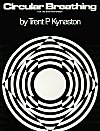 |
G045: Circular Breathing for the Wind Performer
by Trent
P. Kynaston. Warner Bros. Publications, SS, 20 pages. This is a guide
to
learning circular breathing for all wind instrumentalists. The author
discusses
breathing and then provides instruction in beginning, intermediate and
advanced techniques for circular breathing. |
10.95

|
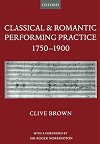 |
G091: Classical
& Romantic Performing Practice 1750-1900
by Clive Brown. Oxford University Press, 1999, PB, 676 pages. Brown
identifies areas in which musical notation conveyed rather different
messages to the musicians for whom it was written than it does to
modern performers, and seeks to look beyond the notation to understand
how composers might have expected to hear their music realized in
performance. There is ample evidence to demonstrate that, in many
respects, the sound worlds in which Mozart, Beethoven, Wagner, and
Brahms created their music were more radically different from ours than
is generally assumed. |
72.95

|
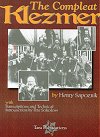 |
G062: The Compleat Klezmer by Henry Sapoznik.
Tara Publications,
1987, PB, 80 pages. This book is the definitive Klezmer anthology. It
includes
a short history of klezmer music, notes and observations on the theory
and performance of klezmer music, 33 annotated melodies, a
discography
and bibliography, resources, and more. Click
on
the book cover to view the table of contents. |
19.95

|
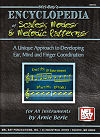 |
G023: Encyclopedia of Scales, Modes and Melodic
Patterns for All Instruments by Arnie Berle. Mel Bay, 1997, SS,
96 pages. This
book provides a comprehensive source for many types of scales. It also
provides recommendations on how to practice scales and a practice
routine. Click
on the book cover to view the table of contents. |
19.95

|
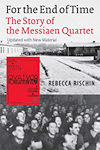 |
G054: For the End of
Time, The Story of the Messiaen Quartet by Rebecca Rischin.
Cornell University Press, 2003 (2006), PB, 175 pages. The author,
clarinet professor at
Ohio University, has written a comprehensive history of the composition
and premiere of the Quartet for the End of Time (Quatour
pour la fin du Temps) which
took place in German camp for French prisoners
of war in January, 1941. Based on extensive interviews and documentary
research, it examines the events that lead to the composition, the
experiences of the musicians in the camp, the composer's interpretive
preferences,
and the musicians' problems in execution and how they affected the
premiere and subsequent performances. The paperback edition includes a
new
Appendix C with additional information. The music is also available: Quartet for the End of Time
(Quatuor pour la Fin du Temps). |
24.95

|
 |
G035: The French Noel - With an Anthology of 1725
Arranged for
Flute Duet by Betty Bang Mather & Gail Gavin. Indiana
University
Press, 1996, PB, 120 pages. French noels unite sacred and profane
texts,
music, and dance as performed from the late Middle Ages through the
Baroque.
Part I of The French Noel discusses the history and uses of the form,
suggests
appropriate dance steps, and examines its musical and poetic style.
Part
II consists of 16 Christmas songs first published in 1725. Betty Bang
Mather
and Gail Gavin have transcribed these charming pieces with lyrics of
the
period so that they may be either sung or played. The volume is
enhanced
by several facsimile pages from the original publication and
reproductions
of contemporaneous paintings showing noels being performed. |
22.95

|
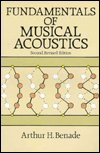 |
G004: Fundamentals of Musical Acoustics by
Arthur H. Benade.
Dover, PB, 596 pages. The Second, Revised Edition originally published
in 1976. This is a hefty book with enough detail for a physicist but
still
rewarding to the layman. It includes about 75 pages specifically
devoted to woodwinds. |
19.95

|
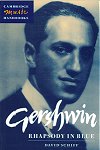 |
G052: Gershwin: Rhapsody in Blue
by David
Schiff. Cambridge
University Press, 1997, PB, 132 pages. The Rhapsody in Blue (1924)
established
Gershwin's reputation as a serious composer and has since become one of
the most popular of all American concert works. In this richly
informative
guide David Schiff considers the piece as musical work, historical
event
and cultural document. He traces the history of the Rhapsody's
composition,
performance and reception, placing it within the context of American
popular
song and jazz and the development of modernism. He also provides a full
account of the different published and recorded versions of the work
and
explores the many stylistic sources of Gershwin's music. |
27.95

|
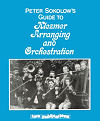 |
G112: Guide to Klezmer
Arranging and Orchestration by Peter Sokolow.
Tara Publications, 1991, SS, 41 pages. Included in this books are
invaluable hints on setting up an arrangement, instrument combinations,
phrasing, notation, vocal background writing, historical performance
practices, and sound "basics" of klezmer theory and orchestral writing,
complied and annotated in an organized, concise way by an experienced
klezmer veteran.
|
19.95

|
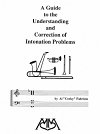 |
G070: A Guide to the Understanding
and Correction of Intonation Problems by Al "Corky" Fabriozio.
Meredith Music Publications, 1994, SS, 30 pages. This book could be
titled:
How to Tune the Wind Ensemble. It provides details such as pitch
tendencies
and tuning strategies for the principal wind ensemble instruments, a
tuning
method for the entire ensemble, and acoustical considerations by
instrument
of various chords (which could be turned into an exercise). |
13.95

|
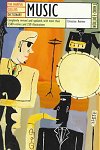 |
G009: The Harper Collins Dictionary of Music
by
Christine
Ammer. HaperCollins, PB, 3rd edition, 512 pages. This completely
revised
and updated edition of the popular HarperCollins Dictionary of Music is
a valuable reference tool for students, professionals, and music lovers
alike. More then just a book of simple definitions, it provides
in-depth
explanations and examples of over 3,500 musical terms and includes over
250 illustrations to help clarify the entries. |
21.95

|
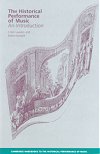 |
G010: The Historical Performance of Music, An
Introduction by
Colin Lawson and Robin Stowell. Cambridge University Press, PB, 219
pages.
This book offers students and performers a concise overview of
historical
performance. Chapters include: Music as History, The application of
primary
sources, Changes in Musical Styles, Conditions and Practices, Case
Studies
in Ensemble Music (Bach: St. Matthew Passion BWV 244, Mozart: Serenade
for 13 Instruments K361, Berlioz: Episode de la vie d'un Artiste,
Symphonie
Fantastique en cinq parties Op. 14, Brahms: Symphony No. 2 in D. major
Op. 73), and The Continuing Debate. |
21.95

|
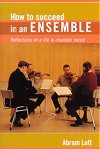 |
G056: How to Succeed
in an Ensemble by Abram Loft. Amadeus Press, 2003, HB, 300
pages.
The author was a member of the Fine Arts Quarter for 25 years and later
chairman of the string department at the Eastman School of Music. This
book is both an personal account of what life is really like in a
chamber
ensemble and advice on both the artistic and business aspects of
creating
and sustaining a successful chamber group. |
24.95

|
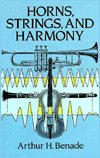 |
G005: Horns, Strings, and Harmony by Arthur
H. Benade. Dover, PB, 271 pages. An outstanding non-technical
introduction to
acoustics by Dr. Benade who was a physicist, flutist, and science
educator. The
book covers vibrating systems, the role of the human ear in hearing
music,
how pianos, violins, trumpets, oboes, clarinets, flutes, saxophones and
many other instruments work. In addition, the author provides
instructions for building a home made trumpet, clarinet, and flute. |
12.95

|
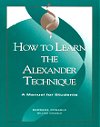 |
G033: How to Learn the Alexander Technique by
Barbara
Conable. Andover Press, Third Edition, 1995, PB, 154 pages. A
primer
for students of the Alexander Technique, a well-known method for
improving
freedom and ease of movement and physical coordination. This book
provides
the first authoritative account of William Conable's concept, Body
Mapping,
the study of how our ideas about our bodies affect our experience and
movement.
Includes sections aimed at instrumentalists, vocalists, actors and
dancers. |
24.50

|

|
G006: The Inner Game of Music by Barry Green
and W. Timothy
Gallwey. Doubleday, HB, 225 pages. The Inner Game of music is that
which
takes place in the mind, played against such elusive opponents as
nervousness,
self doubt, and fear of failure. Using the same principles of "natural
learning" Timothy Gallwey developed so successfully for tennis, golf
and
skiing and applying them to his own field, noted musician Barry Green
shows
how to acknowledge and overcome these internal obstacles in order to
bring
a new quality to the experience and learning of music. There are also
chapters
on ensemble playing, improvisation, composition and creativity, and
listening
skills - an essential part of the Inner Game - are discussed
throughout. |
24.95

|
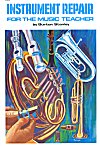 |
G046: Instrument Repair for the Music Teacher by
Burton
Stanley. Alfred Publishing Co., 1978, PB, 154 pages. A bit dated,
perhaps,
and more detailed than the name suggests, this book provides
instructions
for the most common repair procedures for woodwind and brass
instruments.
The primary focus is on clarinet, flute, piston valve brass, rotary
valve
brass, and trombone. Corking the saxophone neck is covered but not
saxophone
repadding. |
22.95

|
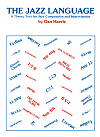 |
G178: The Jazz Language: A
Theory Text for Jazz Composition and Improvisation by Dan
Haerle.
Alfred Publishing Co., 1980, PB, 58 pages. This text presents all of
the materials commonly used by the jazz musician in a logical order
dictated both by complexity and need. Some of the material is more
useful to the writer or arranger while other material may be more
valuable for the improviser. The book is primarily focused on chords
and scales, but also includes brief sections on harmonization and
improvisation. The book is not intended to be either an arranging or
improvisation text, but merely a reference providing the information
musicians need to pursue any activity they wish. |
17.95

|
 |
G216: The Jazz's Musician's Guide to Creative
Practicing by
David Berkman. Sher Music Co., 2007, SB, 154 pages + CD. In this book,
NY pianist and recording artist David Berkman shows you
how to make practicing interesting and enjoyable by breaking problems
into manageable tasks that you can easily master. The Jazz Musician's
Guide To Creative Practicing covers many of the things you need in
order to be a complete jazz musician, including: basic jazz theory,
clearly explained, how to make scale and arpeggio practicing fun and
relevant to playing tunes, how to effectively add chromatic approach
notes and upper structure triads to your solo lines, How to practice
tunes like "Body And Soul" and "Giant Steps" or rhythm changes and get
better at the whole tune by mastering individual aspects of it, how to
improve your ability to swing, to play in odd meters and to play with
different rhythmic feels, and how to play fast without losing your
ability to make the notes sing. The CD is of David demonstrating many
of the ideas presented. |
28.95

|
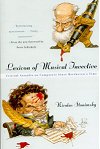 |
G011: Lexicon of Musical Invective, Critical Assaults
on Composers Since Beethoven's Time by Nicolas Slonimsky.
Norton, PB, 325
pages. With a new forward by Peter Schickle. This legendary book is an
anthology of critical assaults on well-known composers and their works.
Here
the reader will find biased, unfair, ill-tempered, and singularly
unprophetic judgments by musicians and reviewers. An example: I am
bound to
say that dreary though most musical humour is, Strauss's is the
dreariest
that has ever bored me. I contemptuously dismiss Till Eulenspiegel
as a pretentious piece of mart shoddy. (J.F. Runciman, Saturday
Review, London, May 2, 1896) |
14.95

|
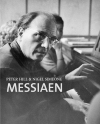 |
G143: Messiaen
by Peter Hill and Nigel Simeone. Yale University Press, 2005, HB 352
pages. Based upon unprecedented access to Messiaen’s private archive
granted to the authors by the composer's widow, Yvonne Loriod-Messiaen,
Peter Hill and Nigel Simeone trace the origins of many of Messiaen's
greatest works and place them in the context of his life, from his
years at the Paris Conservatoire and his passionate first marriage to
Claire Delbos through the immense achievements of his final decades. A
beautiful and well illustrated book.
|
47.95

|
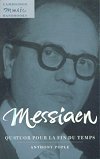 |
G053: Messiaen - Quatour pour la fin du Temps
by Anthony Pople. Cambridge University Press, 1998, PB, 115 pages. This
book is a
comprehensive guide to the Quartet for the End of Time
by
Olivier Messiaen (1908-92). It covers the origin of the work in a
prisoner-of-war
camp in 1940-41 and has an in depth assessment of each of its eight
movements. The music is also available: Quartet for the End of Time
(Quatuor pour la Fin du Temps). |
37.95

|
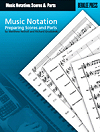 |
G179: Music Notation: Scores
and Parts by Matthew Nicholl and Richard Grudzinski. Berklee
Press, 2007, PB, 153 pages. Whether you notate music by hand or use
computer software, this practical reference will show you today's best
practices for how to render the details of your scores and parts.
Improve your music's legibility and express your ideas clearly to get
the best possible representation of your music. You will learn to:
create scores that are easy to conduct and parts that are easy to
perform; understand the unique practices and standards for handwritten
vs. computer-generated scores, such as those by Finale® and
Sibelius; lay out scores with proper instrument order, measures per
page, and common alignment practices; understand the publication
standards for orchestral, big-band, vocal, and rhythm-section–based
scores; use appropriate practices for different styles, such as pop,
commercial, classical, and jazz; master the details of setting notation
elements such as measure numbers, rehearsal markings, chord symbols,
dynamics, lyrics, and many more; and use specialized notation, such as
measure repeats, col, slashes, hits over time, and others.
|
16.95

|
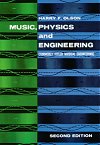 |
G020: Music, Physics and Engineering by Harry
F. Olson.
Dover, 1967, PB, 460 pages. A wide ranging book covering both the
mechanical
and electronic areas of sound production and reproduction. Topics
covered
include sound waves, musical terminology, resonators and radiators,
musical
instruments and their characteristics, properties of music, acoustics
(theater,
studio, and room), sound-reproducing systems, and electronic
music.
Many charts, diagrams and equations are included. While many aspects of
this book are quite technical, most of the information will be
comprehensible
to all musicians. |
16.95

|
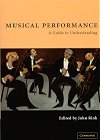 |
G029: Musical Performance, A Guide to Understanding edited
by John Rink. Cambridge University Press, 2002, PB, 245 pages. This
book
unravels the complexities of playing music and reveals aspects of
learning,
playing and responding to music relevant to performances of all levels.
A survey of performance through the ages leads to a presentation of
basic
historical, analytical and psychological concepts. Four chapters follow
on teaching, development, practice and memorization. The next section
considers
the "translation" from score to sound, physical projection, ensemble
playing
and performance anxiety. The final section addresses the act of
listening,
the legacy of recordings, music criticism and "performers on
performance". |
34.95

|
 |
G047: Musical Wind Instruments by Adam Carse.
Dover, 2002,
PB, 381 pages. An unabridged republication of this work originally
published
in London in 1939. A comprehensive guide to wind instruments used in
European
orchestras and in military and other wind bands during the preceding
400
years. Includes flutes, oboes, clarinets, bassoons, trumpets, cornets,
horns, trombones, bugles, and related instruments. Illustrated with
photos
and drawings. |
16.95

|
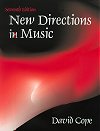 |
G024: New Directions in Music, Seventh Edition
by David
Cope. Waveland Press, 2001, PB, 259 pages. Directions in the musical
avant-garde
in the past fifty years seem as numerous and diverse as the composers
and
their works. Yes these directions have historical motives and aesthetic
values, traceable and uniquely observable due to their singularly
radical
nature. Building on previous editions, this book explores the history,
philosophy, composers, and works of the avant-garde since the late
1940s.
Musicians and musical scholars of all levels with benefit from the
author's
clear presentation, organizing a disparate field into a logical
succession
of ideas and developments. |
49.95

|
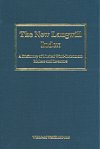 |

G039: The New Langwill Index, A Dictionary of Musical
Wind-Instrument
Makers and Inventors by William Waterhouse. Tony Bingham, 1993,
HB, 555 pages. Based on the work of Lyndesay Graham Langwill, this book
is an entirely new edition rather than a revision of his last work. The
primary purpose of this volume is to assist in the identification,
dating
and evaluation of wind instruments. It also provides some information
on
the careers and achievements of makers and inventors. A first class
book
in every way. Because of the weight of this
book,
Media Mail (bookrate) shipping charges will be based on the actual cost
of postage. |
124.95

|
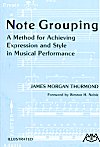 |
G063: Note Grouping by James Morgan Thurmond.
Meredith
Music Publications, 1981, PB, 144 pages. Subtitled: A Method for
Achieving
Expression and Style in Musical Performance. Fully explains through
musical
example, the concept of expressive musicianship as taught by Anton
Horner,
William Kincaid and Marcel Tabuteau. This book clearly illustrates how
to teach students to play or sing with expression, musicianship and
style
and will help to make your performances “come alive.” Here in print
are exactly the concepts I was taught by Robert Shaw and Julius
Herford...it
has had a profound influence upon music education everywhere!
Weston
H. Noble, Director of Music Activities, Luther College |
34.95

|
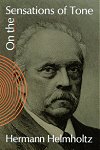 |
G021: On the Sensations of Tone by Hermann
Helmholtz. Dover, 1954, PB, 576 pages. This is an unabridged reprinting
of the
1885 translation by Alexander J. Ellis of the last German edition of Die
Lehre von den Tonempfundungen. It includes a new introduction
written in 1954. On the Sensations of Tone is regarded as one
of the
world's greatest scientific classics. It bridges the gap between the
natural
sciences and music theory. The first two parts of the book deal with
the physics
and physiology of music. The last part contains the author's theory on
the aesthetic relationship of musical tones. |
22.95

|
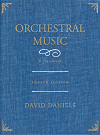 |
G095: Orchestral Music, A
Handbook by
David Daniels. Scarecrow Press, Fourth Edition, 2005,
HB, 627 pages. The recent forth edition of this book, much larger in
format then the third edition. Expanded to 6400 entries and almost 900
composers (only 4200 in 3rd Ed.). Merged with the American Symphony
Orchestra League's OLIS (Orchestra Library Information Service).
Enhanced specific information on woodwind & brass doublings. Lists
of required percussion equipment for many works. New, more intuitive
format for instrumentation. More contents notes and durations of
individual movements. Composers' citizenship, birth and death dates and
places, integrated into the listings. If you need to know
the instrumentation and the
publisher(s) of orchestral works
this book is essential.
Because of the weight of this
book,
Media
Mail (bookrate) shipping charges will be based on the actual cost of
postage.
|
66.95

|
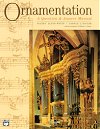 |
G025: Ornamentation, A Question & Answer Manual
by Valery Lloyd-Watts and Carole L. Bigler. Alfred Publishing Co. Inc.,
1995, SS, 64 pages. An excellent and inexpensive introduction to
ornamentation. Written to help all musicians, regardless of
instruments, it presents a
logical step-by-step procedure that makes realizing an ornament and
integrating it into a performance simple, stimulating, and rewarding.
Covers the
Baroque, Classical, Romantic, and Contemporary eras. |
10.95

|
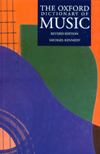 |
G007: The Oxford Dictionary of Music by
Michael
Kennedy
and Joyce Bourne. Oxford University Press, HB, 985 pages. A new edition
of the most comprehensive one volume music dictionary available,
compiled
by one of the world's foremost music authorities.
With
over 12,000 entries, the dictionary's coverage is exceptional. It is
distinguished
from the other dictionaries on this page by the inclusion of
information
on musicians, composers, and musical works. Written to appeal to
general
readers as well as musicians and musicologists, it is an indispensable
addition to any reference shelf. (Special Order.
Please email us if you
want to order. Price subject to change.) |
54.95
|
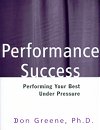 |
G055: Performance Success by Don Greene.
Routledge, 2002,
PB, 151 pages. Performance anxiety is a fact of life for all musicians.
You can deny the problems of stress in performance or you can face
them,
even learn to embrace them. Performance Success teaches a set
of
skills so that a musician can be ready to go out and sing or play at
his
or her highest level, working with energies that might otherwise be
wasted
in unproductive ways. This is a book of skills and exercises, prepared
by a master teacher. |
30.95

|
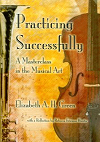 |
G144: Practicing
Successfully, A Masterclass in the Musical Art
by Elizabeth A. H. Green. Gia Publications,
2006, HB, 147 pages. With a Reflection by Rebecca Ericsson Hunter. In
Practicing Successfully, legendary music educator Elizabeth A. H. Green
draws upon her decades of experience instructing students of all levels
to break down the practicing regimen into a logical learning sequence.
In Part One, she suggests isolating difficult musical passages so they
become instantly manageable using rhythmic motifs, scales,
accentuations, and etudes. In Part Two, experts on various instruments
discuss recurring problems and how to defeat them. In the concluding
Part Three, Green notes the physiological principles pertaining to
practice and suggests ways to modify practice sessions to reflect these
facts. She writes, "Ultimate success depends upon one immutable,
inescapable, and well-publicized fact: the musician has to practice
successfully or not."
|
23.95

|
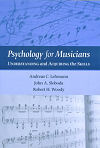 |
G134: Psychology for
Musicians
by Andreas C. Lehmann, John A Sloboda, and Robert H. Woody. Oxford
University Press,
2007, HB, 268 pages. Subtitled: Understanding and Acquiring the Skills.
Examining the processes that underlie the acquisition of musical
skills, the authors provide a concise, accessible, and up-to-date
introduction to psychological research for musicians. They
explore common traits between skilled activities in non-musical domains
and particular musical behaviors such as sight-reading, improvisation,
performing from memory, and composing. With these comparisons in mind,
they examine how the skills needed to teach, perform, and even listen
to music are acquired and honed over time. The book is divided into
three sections: Musical Learning, Musical Skills, and Musical Roles.
|
29.95

|
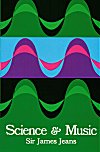 |
G048: Science & Music by Sir James Jeans.
Dover, 1968,
PB, 258 pages. An unabridged republication of the 1937 English edition
of this classic book on musical sounds. It conveys precise information
in a non-technical way for anyone interested in music. Includes the
various
means of producing sounds, hearing, scales, intonation, types of
tuning,
the concert hall, orchestras and many more topics. |
12.95

|
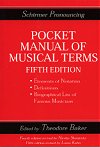 |
G008: Schirmer Pronouncing Pocket Manual of Musical
Terms
edited by Theodore Baker, Nicolas Slonimsky, and Laura Kuhn. Schirmer,
PB, 362 pages. This is a small (3 inches by 4 inches), extremely
useful,
and inexpensive reference. Includes elements of notation, notes and
rests,
the staff, clefs, scales, chromatic signs, intervals, keys, chords,
time
signatures, rules for pronouncing German, French, and Italian, a
comparative
table of tempo marks, musical terms (263 pages), and noteworthy
musicians
(76 pages). |
5.95

|
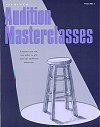 |
G071: Selected Audition
Masterclasses. Windplayer Publications, 2004, SS, 32 pages.
Written
by 15 top experts (such as Don Greene and Barry Green) who work
throughout
the music field, this book starts with techniques that help you
overcome
your first audition jitters and continues with how you can be better
prepared
for any audition in the music field, including the country's leading
orchestras.
No matter what instrument you play. You'll even learn how players are
able
to get professional jobs without performing an actual audition! |
15.95

|
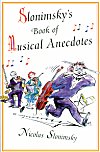 |
G043: Slonimsky's Book of Musical Anecdotes by
Nicholas
Slonimsky. Routledge, 2002, PB, 320 pages. Let Slonimsky regale you
with
tales of Mozart, Beethoven, Rossini and the other expected Classical
Music
figures, the ugly ducking of Russian music, the Kafka of modern music
and
other sublime misfits. First published in 1948, this book has earned
well-deserved
acclaim for being insightful, witty and enthralling. Charming
illustrations
by Robert Bonotto complete this superb collection of musical vignettes.
Great for bedside reading, a gift, or a source for information to
enliven
a music history class. |
35.95

|
 |
G028: A Soprano on Her Head by Eloise Ristad.
Real People
Press, 1982, PB, 204 pages. Eloise Ristad deals here with complex
problems
which torment and cripple so many of our most creative and talented
people,
and she does so with compassion, wisdom, and wit. The problems of stage
fright and other petty and debilitating fears are a suffering of
epidemic
proportions in our society, and involve modalities of thought and
projections
that rob spontaneity and enthusiasm in artistic performance. A
Soprano
on Her Head supplies answers and methods for overcoming these
universal
psychological blocks--methods that have not only been proven in her own
studio, but which trace back through history to the oldest and wisest
systems
of understanding the integration of mind and body. |
16.50

|
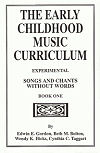 |
G169: Songs and Chants without
Words, Book 1 by Edwin Gordon, Beth Bolton, Wendy Hicks, and
Cynthia Taggart. GIA Publications, 1993, SS, 91 pages. The booklet is
part of The Early Childhood Music Curriculum, but given the complexity
of some of the the rhythms and meters, appears to be much more useful
for high school and college sight singing training. It includes 109
short songs without words and 74 chants (rhythms only). They are cross
indexed by tonality and meter.
|
12.95

|
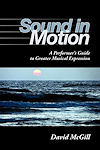 |
 G228: Sound in Motion
by David McGill. Indiana University Press, 2007, PB, 392 pages. David
McGill has assembled an exhaustive study that uses the musical concepts
of the legendary Marcel Tabuteau as a starting point from which to
develop musical thought. McGill methodically explains the frequently
misunderstood "Tabuteau number system" and its relationship to note
grouping-the lifeblood of music. The controversial issue of baroque
performance practice is also addressed. Instrumentalists and vocalists
alike will find that many of the ideas presented in this book will help
develop their musicianship as well as their understanding of what makes
a performance "musical." G228: Sound in Motion
by David McGill. Indiana University Press, 2007, PB, 392 pages. David
McGill has assembled an exhaustive study that uses the musical concepts
of the legendary Marcel Tabuteau as a starting point from which to
develop musical thought. McGill methodically explains the frequently
misunderstood "Tabuteau number system" and its relationship to note
grouping-the lifeblood of music. The controversial issue of baroque
performance practice is also addressed. Instrumentalists and vocalists
alike will find that many of the ideas presented in this book will help
develop their musicianship as well as their understanding of what makes
a performance "musical."
|
27.95

|
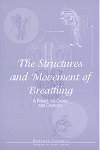 |
G040: The Structures and Movement of Breathing
by Barbara
Conable. Gia Publications, 2000, SS, 48 pages. While this book is
subtitled:
"A Primer for Choirs and Choruses," it is also very useful for players
of wind instruments. It provides clear and concise information about
breathing
and features dozens of detailed illustrations and explanations. This
book
is based on the technique of Body Mapping. |
7.95

|
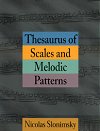 |
G044: Thesaurus of Scales and Melodic Patterns
by Nicolas
Slonimsky. Amsco Publications, PB, 244 pages. Originally published in
1947,
this book is a reference book of scales and melodic patterns. It is
primarily
a resource for composers, but instrumentalists have also found it
useful
as a source for ideas in jazz and as exercises for modern classical
music. |
29.95

|
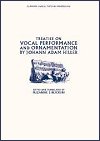 |
G057: Treatise on Vocal
Performance and Ornamentation by Johann Adam Hiller, edited and
translated by Suzanne J. Beicken. Cambridge University Press, 2001, PB,
199 pages. Hiller's Treatise on Vocal Performance and Ornamentation was
published in Germany in 1780 and is an important manual on vocal
technique
and performance in the eighteenth century. This present edition,
translated
with an introduction and extensive commentary by musicologist Suzanne
J.
Beicken, makes the treatise available for the first time in English.
With
its emphasis on practical aspects of ornamentation, declamation and
style
it will be valuable to instrumentalists as well as singers and is a
significant
contribution to the understanding of performance practice in the
eighteenth
century. Also very valuable to instrumentalists performing music of
this
period. |
44.95

|
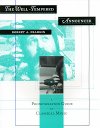 |
G072: The Well-Tempered
Announcer, A Pronunciation Guide to Classical Music by Robert
A.
Fradkin. Indiana University Press, 1996, PB, 255 pages. In this
innovative
guide, Robert Fradkin provides the pronunciation of over 2000 personal
names, titles of works, and musical terms. In addition, at least half
the
book is devoted to general pronunciation guidelines for both familiar
and
unfamiliar languages, giving the reader the tools to pronounce words
which
are not listed. |
32.95

|
 |
G235: Tuning for Wind
Instruments by Shelley Jagow. Meredith Music Publications,
2012, PB, 120 pages. The most complete intonation resource for band
directors and anyone interested in tuning. It includes the origin of
pitch tuning standards. Understanding when to apply equal tempered vs.
just tempered tuning. How to calculate the proper harmonic ratios for
fine-tuning chords. It identifies the best tuning notes and gives
tuning procedures for each instrument. It lists more than 70 tuning
truths and myths. In addition, this book includes intonation charts for
tracking personal progress, along with extensively researched
color-coded fingering charts for the most used wind instruments
providing pitch tendencies and suggestions for alternate fingerings.
|
32.95

|
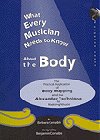 |
G034: What Every Musician Needs to Know about the Body
by
Barbara Conable. Andover Press, 2000, SB, 101 pages. A book about
Body Mapping and the kinesthetic sense and how they can be developed in
ways that help musicians play well. It is full of information about the
Alexander Technique, but it is very useful for people who don't have
access
to an Alexander teacher as well. Heavily illustrated. |
23.50

|
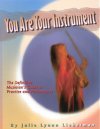 |
G019: You Are Your Instrument by Julie Lyonn
Lieberman.
Huiksi Music, New York, 1991, printing of 1997, PB, 152 pages. This
book
is a detailed guide to mind and especially the body of the musician. It
provides guidance to help musicians heal existing injuries and develop
a more enjoyable physical/mental experience during practice and
performance.
It includes anatomy charts and 19 pages of illustrated exercises. |
19.95

|
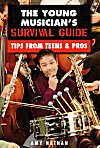 |
G059: The Young Musician's Survival Guide by
Amy Nathan.
Oxford University Press, 2000, PB, 128 pages. Subtitled Tips from
Teens
& Pros, this book will help young people cope with difficulties
involved in learning a new instrument and remaining dedicated to
playing
and practicing. Teens from renowned music programs join pro musicians
such
as Wynton Marsalis, Paula Robison, and James Galway in offering
practical
answer to questions from what instrument to play to where the musical
road
may lead. Probably most suited for ages 11-14 and may also be useful to
music teachers who teach this age group. |
9.95

|




























































 G228: Sound in Motion
by David McGill. Indiana University Press, 2007, PB, 392 pages. David
McGill has assembled an exhaustive study that uses the musical concepts
of the legendary Marcel Tabuteau as a starting point from which to
develop musical thought. McGill methodically explains the frequently
misunderstood "Tabuteau number system" and its relationship to note
grouping-the lifeblood of music. The controversial issue of baroque
performance practice is also addressed. Instrumentalists and vocalists
alike will find that many of the ideas presented in this book will help
develop their musicianship as well as their understanding of what makes
a performance "musical."
G228: Sound in Motion
by David McGill. Indiana University Press, 2007, PB, 392 pages. David
McGill has assembled an exhaustive study that uses the musical concepts
of the legendary Marcel Tabuteau as a starting point from which to
develop musical thought. McGill methodically explains the frequently
misunderstood "Tabuteau number system" and its relationship to note
grouping-the lifeblood of music. The controversial issue of baroque
performance practice is also addressed. Instrumentalists and vocalists
alike will find that many of the ideas presented in this book will help
develop their musicianship as well as their understanding of what makes
a performance "musical."








